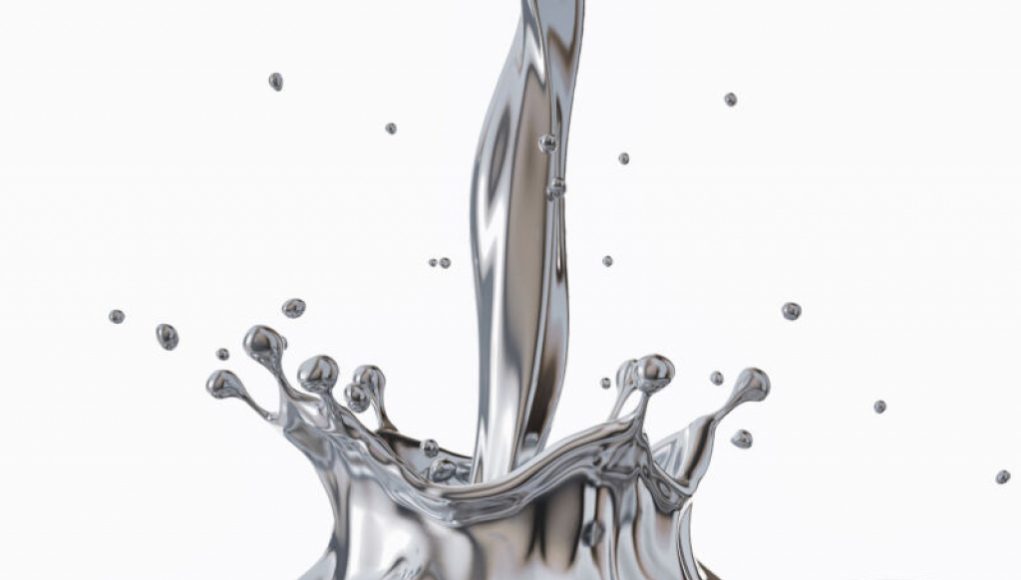Get ready for the future of paper! While it may not seem like the most high-tech material, a team of scientists has found a way to turn it into a smart gadget using liquid metal. This incredible liquid alloy can transform paper and other materials into self-functioning objects. Liquid metal is already used in circuits and wearable sensors, but this new application takes it to the next level. Inspired by origami, the team led by Bo Yuan of Tsinghua University in China has developed a way to apply liquid metal to paper without any adhesive. The result? Paper that can fold itself into origami shapes and even conduct heat and electricity. It’s like magic, but it’s real!
The challenge with liquid metal is that it tends to stick together, making it difficult to adhere to surfaces without a glue-like substance. However, Yuan and his team discovered a way to make it stick to paper without any adhesive. They used an alloy of bismuth, indium, and tin oxide (BiInSn) and tested it against an indium/gallium alloy (eGaIn). BiInSn proved to be more effective because it doesn’t oxidize when exposed to air, which means it can stick to surfaces without relying on an oxide film. It also has a higher melting point, making it more stable.
The team experimented with different amounts of pressure and rubbing speed to ensure the liquid metal adhered uniformly to the paper. They even created an origami cube out of the metal-coated paper, which could fold and unfold itself without any other binding agent. They also built 3D structures out of individual pieces of flat, metal-coated paper that could keep their shape without falling apart. The coating could be peeled off afterward without affecting the paper substrate, and it could be recycled and used repeatedly.
Yuan believes that this self-adhesive liquid metal could be used to create smart objects and soft robots that can fit into tight spaces. The next step is to find a coating where the metal does not peel off once solidified. Yuan is considering testing bio-friendly paint spray to protect the coating in materials that may eventually be used as packaging, on human skin, underwater, and even in conditions seen on other planets and moons.
This substance could be a game-changer for soft robots in alien environments. Autonomous soft robots that are thin and flexible would be able to venture into places where larger rovers are unable to fit or navigate safely, and the self-adhesion of the liquid metal coating would allow them to fold and unfold on their own. Yuan believes that this method may provide a new route for designing space explorers.
The future is looking bright for paper, and we can’t wait to see what other incredible innovations will come from this technology.
In a world where technology is quickly and constantly advancing, it is hard to keep up with the latest innovations. However, one new development in the tech industry has the potential to revolutionize the way we interact with ordinary objects: revolutionary liquid metal technology.
This technology utilizes a proprietary liquid metal alloy, made of a combination of tin and indium, which has the unique ability to transform ordinary objects into smart devices. What makes this possible is a combination of features that allow the liquid metal to bond to any surface while maintaining a range of flexibility and robust conductivity. This enabling material supports the addition of electronics, sensors, or even more complex components that increase the capabilities of virtually any existing object.
The potential implications of this technology are far reaching. For example, sensor networks and other interactive objects could be placed on a bike, making it safer and smarter, or in a car, transforming it into an autonomous vehicle. Furthermore, interactive wallpaper, clothing, and furniture could be further enhanced and personalized, creating endless possibilities.
In addition to its broad implications, this revolutionary technology is also paving the way for the advancement of other fields. For instance, the ability to quickly create prototype parts using liquid metal could reduce the cost and time associated with new product development. This could also significantly shorten the development time for medical, automotive, and consumer products.
In less than a decade, liquid metal technology has gone from a mere concept to a reality. This innovation is sure to pave the way for limitless possibilities in the way we interact with our environment. With further research and development, these revolutionary capabilities could soon be available for common use.




















